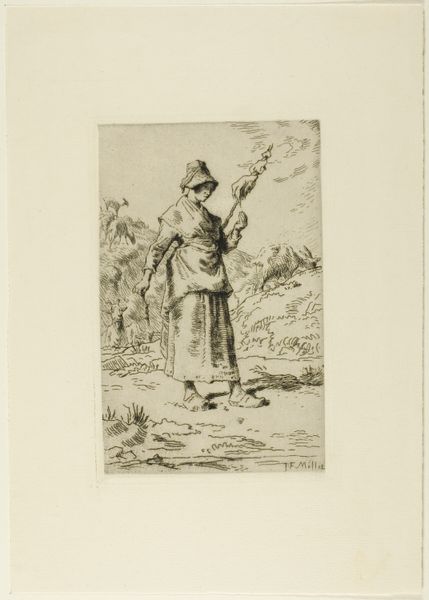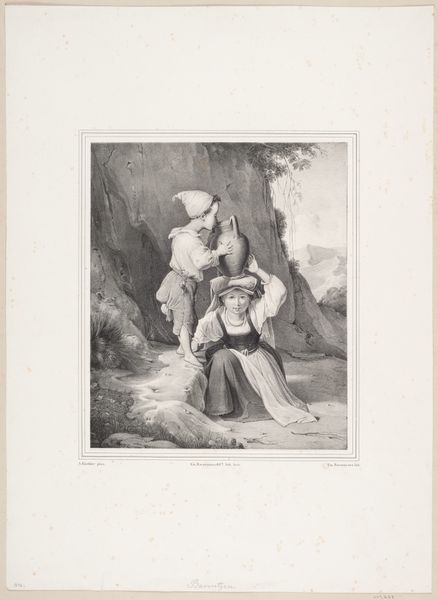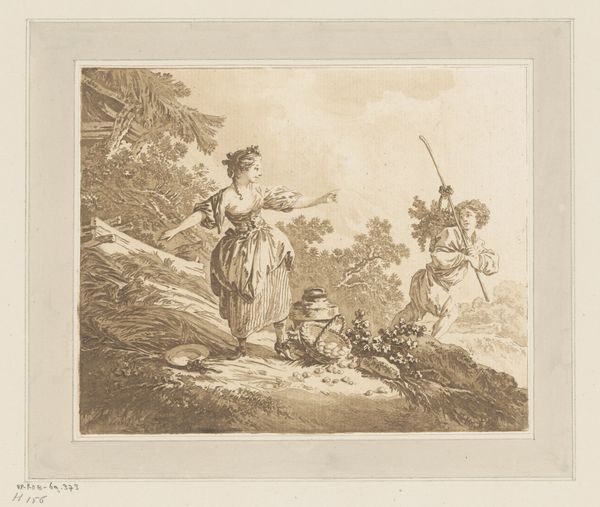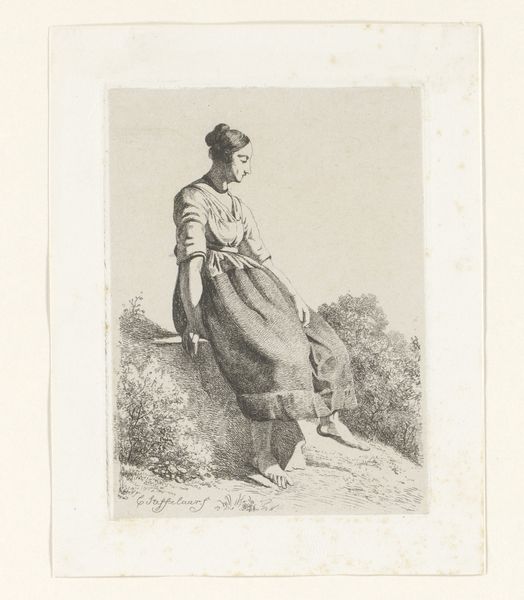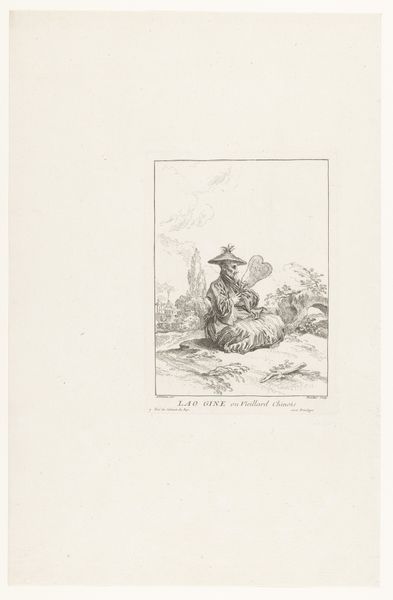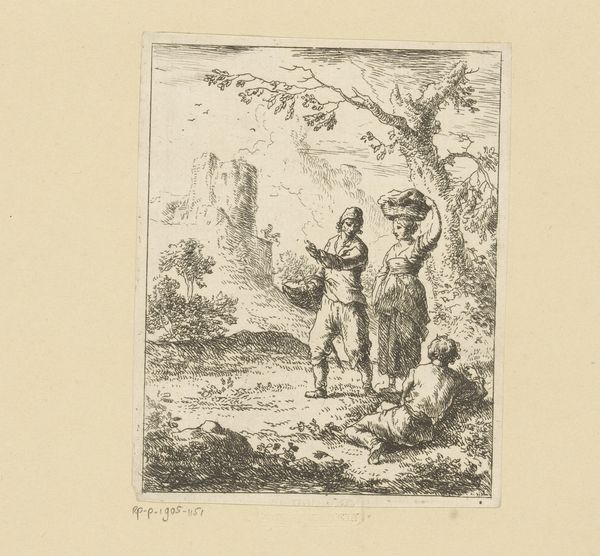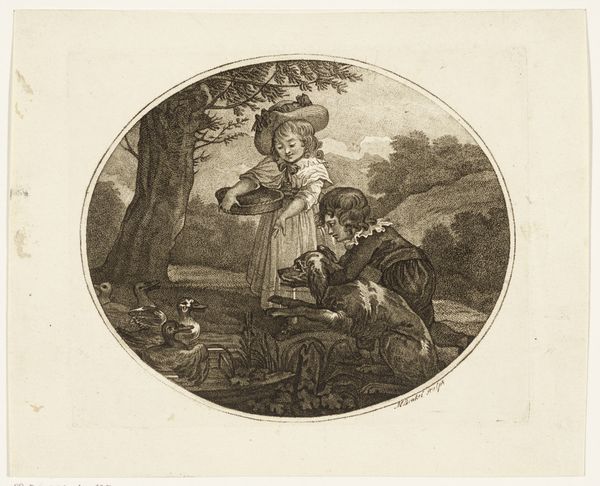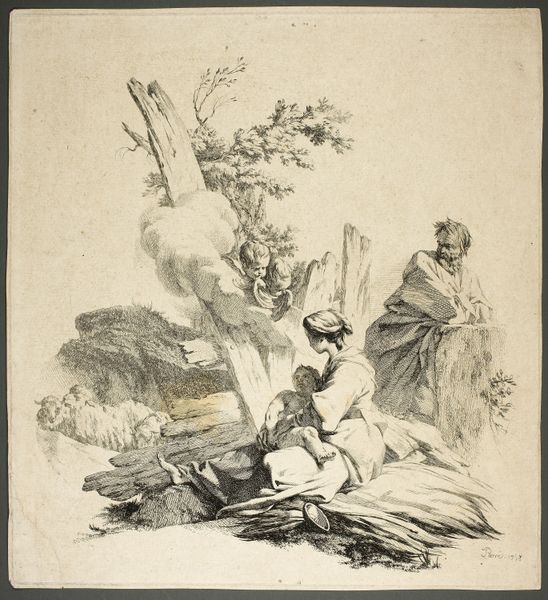
print, engraving
#
narrative-art
# print
#
landscape
#
figuration
#
genre-painting
#
engraving
#
realism
Dimensions: height 166 mm, width 160 mm
Copyright: Rijks Museum: Open Domain
Editor: We’re looking at "Vrouw met een baby wegrennend van een woning," or "Woman with baby running away from a dwelling," by Isaac Weissenbruch, made sometime between 1836 and 1912. It's an engraving. It gives off this feeling of urgent flight... but I’m unsure from what. How do you interpret this work, thinking about its historical context? Curator: This image resonates strongly with 19th-century social anxieties, wouldn't you agree? Consider the context: industrialization was rapidly transforming the landscape and the traditional family structure. Genre paintings at the time became important tools for societal messaging, often framing an ideal of motherhood and domesticity. This piece actively disrupts this ideal. Editor: How so? Curator: Precisely *what* is she fleeing? We don't know, do we? The lack of specificity allows the viewer to project their own societal fears and concerns onto the image. The ‘dwelling’ seems rustic but also small – poverty? Was violence towards women prevalent during the represented time, and could that be alluded to? The flight becomes a signifier of social instability. Do you find this ambiguity unsettling, like the artist's social commentary? Editor: Yes, I didn't really consider what "running away" was intended to suggest on its own. But knowing the work may relate to societal fears gives a much more interesting insight. It feels less like an individual moment, and more like a widespread, generalized concern about displacement or familial safety. Curator: Absolutely. Its power resides in that tension between personal narrative and broader socio-political currents. The Rijksmuseum holding this engraving demonstrates how socio-political themes continue to make even seemingly simple artwork extremely relevant.
Comments
No comments
Be the first to comment and join the conversation on the ultimate creative platform.
